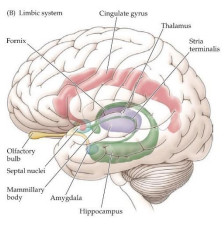A guide on how to unlock the potential of emotions
Abschlussarbeit von Anke Hoermann, als PDF lesen
Our raw feelings can be the messengers we need to teach us things about ourselves and can prompt insights into important life directions.
Emotional Agility, Susan David, PhD
Introduction
Emotions are complex.
They shape the way we learn, the decisions we make, the relationships we build, and how we show up in the workplace.
Emotions are tied to our cognitive faculties and manifested in each of our interactions with ourselves and others (Brackett et al., 2020). They also play a fundamental part in the reasoning process and memory formation (Taylor, 2001).
Therefore, it is no surprise that emotions play a central role in the coaching process.
Historically, the field of emotion was treated with caution in the coaching field (Duffell et al., 2015). Bachkirova and Cox (2007) highlight a view from the International Coaching Federation in 2002:
Coaching assumes the presence of emotional reactions to life events and clients are capable of expressing and handling their emotions. Coaching is not psychotherapy
Since then, various scientific domains have done a large amount of research has been done around this topic.
In the field of coaching, the importance of emotions has also gained greater acknowledgment. Bachkirova and Cox (2007) explain that by working with emotions the coach and the client can gain an understanding of the underlying behavioral strategies associated with these emotions.
Duffell et al. (2015) add that emotions can provide an indication to core principles or values that the client has not acknowledged or is unaware of.
In fact, many individuals are not able to identify the causes of their emotions and how to regulate them.
In a study by Brené Brown (2021), participants were asked to list all the emotions that they could recognize and name as they were experiencing them. Over a timeframe of five years, over seven thousand surveys were collected.
The average number of emotions named was three, namely happy, sad and angry.
When we do not have the ability to understand and express our emotions accurately, we cannot regulate or move through them and our experiences productively.
This is one of the reasons why emotions tend to come up in a coaching session. They are a much-needed instrument to make sense of our surroundings, to manage ourselves and to respond effectively to others (Brown, 2021).
In the past years, the International Coaching Federation has changed its position towards emotions and now advises that coaches should be able to work with strong emotions (ICF, 2013).
Even though, past research has examined the role of emotions in the coaching process, there is no framework available that describes how a client’s emotions can be used effectively in the coaching process.
Hence, this paper aims at providing a guide to systemic coaches on what methods and tools to use in the coaching intervention to unlock the information underlying client emotions.
First, the term emotion is defined, and the underlying neurophysiological mechanisms are described.
Second, prior research on how coaches see the role of emotions in the coaching process is reviewed.
Then, the importance of Emotional Intelligence and its attributes Empathy and Emotion regulation are discussed.
In the fourth section, several systemic methods and tools are described to effectively use emotion in the coaching process.
Afterwards, the paper draws attention to the challenges when working with emotions in the coaching process. To avoid the pitfalls of these challenges, two additional coaching methods are presented.
Finally, the paper concludes with a summary.
What are emotions?
The topic emotion is studied from different perspectives including psychology, philosophy, sociology, neuroscience, and medicine. The approaches to understanding the term are nearly endless and there is no universal definition.
During the 20th century there have been over 90 definitions proposed by scientific research (Plutchik, 2001).
In 2010, Carroll Izard asked 35 expert scientists to define the term emotion and then analyzed those conceptualizations in terms of similarities and differences. The study found that many participants gave a definition that recognized neural circuits and neurobiological process, phenomenal experience or feeling and perceptual-cognitive processes as aspects of emotions.
More recent research supports this view.
Tyng et al. (2017) point out, numerous studies have reported that
cognitive processes are influenced by emotion, these include attention, learning and memory, reasoning and problem-solving
To understand how emotions are linked to these processes, it is important to look at the functions of the limbic system.
The limbic system
Neuroscientific research has shown that emotions, memory and behavior are closely linked to coordinated activities in the regions of the limbic system (Tyng et al., 2017).
The structures of the limbic system are located underneath the cerebral cortex and above the brainstem.
Figure 1 shows the different components of the limbic system.
The hypothalamus produces important hormones and regulates important needs like thirst and hunger, while the basal ganglia is responsible for reward processing, habit formation, movement, and learning (Queensland Brain Institute, n.d.). Two of the major structures in terms of emotions are the hippocampus and the amygdala. In the hippocampus, episodic memories are formed, categorized, and then filed away in long-term storage across other parts in the cerebral cortex (Queensland Brain Institute, n.d.). Located right next to the hippocampus, the amygdala in conjunction with the prefrontal cortex and the medial temporal lobe, is involved in consolidation and retrieval of emotional memories.
By attaching emotional content to our memories, the amygdala also has an impact on the storage of those memories, as emotional events are remembered more accurately and for longer periods of time (Tyng et al, 2017).
Figure 1: The limbic system (Breedlove et al., 2017, Chapter 2,p.46)
Furthermore, fear and rage responses are mediated by the limbic system, which puts the nervous system under stress, activating the so-called “Fight-or-flight response”.
This response is an evolutionary phenomenon. In early human life, it was vital to recognize immediate danger and to reach safety and security quickly. Today, the flight or fight response is more likely to be triggered by stress, anxiety, anger or aggression in everyday life situations (Gepp, 2021).








